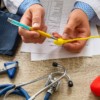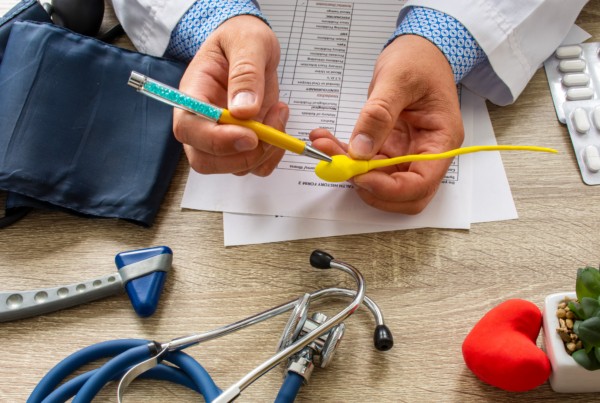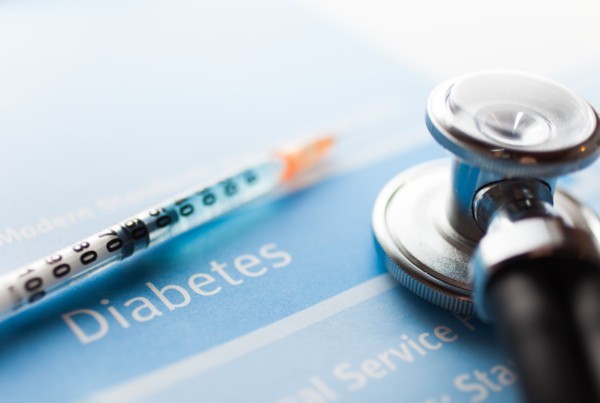Open Communication
Ever think about how the coincidental meeting of a sperm and egg results in a whole new life? Millions of sperm frantically race to reach the one (or two) precious eggs, which are released only once a month at a specific time and live only 1 – 2 days. Not to mention the physiological work that both the male and female bodies put in to ensure the quality of both sperm and egg are in tip-top shape. Couples cross their fingers (and bodies) hard every month, hoping that the odds are in their favor.
We know – mind-boggling! It comes as no surprise that infertility is a common problem that affects up to one in every six couples.
Is it anyone’s ‘fault’?
NO, it’s not! Because the woman often takes center stage during pregnancy, a common misconception is that she is at ‘fault’ when a couple is struggling with fertility. But this is untrue. Fertilization is a complex process that is affected by both male AND female factors.
Studies have found that the male and female factors makeup about 40% and 50%, respectively, with the remaining 10% due to unexplained causes (1). What’s more, infertility in nearly half (40%) of all affected couples was attributed to a combination of both male and female factors. In this article, we break down the why’s, how’s and what’s of male and female fertility.
Women, let’s talk about sperm
Here we go, ladies. What do you need to know about male factor infertility?
In a perfect world, there are approximately 300 million sperm ejaculated during sex. Of these, only about 200 successfully make their way into the Fallopian tubes where the egg awaits (2). Fertilization is dependent on:
-
Having enough sperm
-
Having good quality sperm
-
Having sperm that swim strong
One in a million
It is possible for a man to produce semen that does not contain enough sperm. Having no sperm at all (azoospermia) occurs in 15% of men with infertility (3). A lack of sperm in the semen can be due to a physical blockage in the tubes (vas deferens) transporting sperm out of the testes (the sperm factories), the prostate or in the urethra in the penis itself (known as obstructive azoospermia) or due to there being no sperm produced at all (known as non-obstructive azoospermia or testicular failure).
Obstructive azoospermia may be due to a congenital anomaly resulting in an absent vas deferens, previous trauma or surgery to the scrotum or pelvis, or previous infection of any of the organs in the male reproductive tract (which includes the penis, prostate, seminal vesicles or epididymis) (3).
Men who are found to be unable to produce sperm are usually diagnosed by checking certain hormone levels. Testicular failure develops as a result of previous toxic exposure to chemotherapy or radiation, varicocele or may simply be due to abnormal testicular growth (3).
Quality sperm
Another important sperm parameter is its morphology or its shape. How a sperm is formed – all the way from its head to its tail – is crucial for fertility assessment. Two well-known systems are usually used to rate sperm morphology – the Kruger system and the World Health Organization system. What is considered “Normal” by both standards is similar.
Slow and steady wins the race? Not in this case!
Unlike the story of the hare and the tortoise, sperm that swim well are more likely to win the race of fertilization. The notion that all sperms move forward rapidly is wrong – some may swim in circles and others may move slowly. Sperm have a long way to travel from the point of entry in a woman’s vagina all the way to the egg in the uterine tubes. Sperm found to have persistently poor motility may result in fertilization failure.
Eggs 101 for Men
Men, listen up. Female fertility depends on whether an egg is released, and whether the uterus and its tubes are structurally sound.
Women may be seemingly complex creatures – but our ovulatory cycles are pretty straightforward. Every menstrual cycle lasts 28 – 30 days, with menstruation occurring at day 1, lasting 3 – 5 days depending on the woman. At approximately day 14, an egg is released which lasts 1 – 2 days before it degenerates. The entire cycle then repeats itself before another egg can be released.
The Window of Opportunity
Timing is everything. The window of fertility starts approximately 3 – 5 days before ovulation and lasts 1 – 2 days after the ovum is released (4). Catching this window period is crucial to make sure sperm have plenty of time to encounter the coveted egg. Because these processes are controlled by hormones, there are ways to keep track and monitor their levels to confirm that ovulation is taking place. Key hormones involved in ovulation are:
Luteinizing hormone (LH) – Before ovulation, LH levels are rather static. An egg is typically released in response to a sudden increase in LH levels – termed the ‘LH surge’. LH can be detected through urine or blood samples. A large Cochrane review found that timed intercourse based on urinary LH monitoring was linked to increased pregnancy rates (5).
Follicular stimulating hormone (FSH) – Like LH, there is a surge in FSH just before ovulation. However, no studies are available studying the accuracy of this method.
Estrogen – Estrogen levels rise just prior to ovulation and can be measured in the saliva and vaginal mucus. Tests which assess estrogen levels in the saliva do so by looking at patterns of saliva – known as salivary ferning analysis. However, the accuracy of this method is lower compared to testing for urinary LH (4).
Progesterone – Progesterone is usually released after ovulation. Levels of its metabolite, pregnanediol 3-glucuronide (PdG) can be detected in the urine. High levels of PdG confirm that ovulation has taken place. Like LH, several studies have supported the effectiveness of using PdG to confirm ovulation (6).
The Female Reproductive Tract
Equally important as ovulation is the structure of the female reproductive tract, which includes the uterus, the ovaries, and its tubes. The egg is released from either ovary right at the end of the tube. Fertilization usually takes place in the tube, with the fertilized egg slowly swept into the uterus.
Any previous surgery, sexually transmitted disease (especially gonorrhea and chlamydia), or another disease called endometriosis (abnormal deposits of tissue lining the uterus which lie outside the uterus) can damage these organs and result in infertility (1).
Problems with the uterus and tubes are best diagnosed with a visit to your local gynecologist, who may order special imaging to investigate the integrity of these organs.
The ‘Big Three’ Factors of Infertility
To sum up, fertility is all about getting the recipe right. The three major factors are:
-
Sperm quality (specifically Motile Sperm Concentration)
-
Successful ovulation
-
Timing of the fertility window
With the new YO Sperm & Egg | Test, Predict, Confirm Kit, all these factors can be tested accurately in the privacy of your home, without the need to mail in a sample or visit a lab.
The journey to a baby is different for everyone. It is important that all partners are educated and sensitive towards the needs of the other. Keep yourselves informed about fertility facts and always stay supportive. Remember, it ALL Started with a Sperm and Egg!







